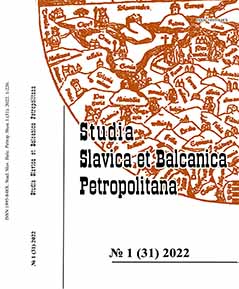Интерьер Исаакиевского собора в XIX веке: Метаморфозы символического послания
The Interior of St. Isaac’s Cathedral in the 19th century: metamorphoses of symbolic message
Author(s): Oleg LyubeznikovSubject(s): Cultural history, Architecture, Visual Arts, 19th Century
Published by: Издательство Исторического факультета СПбГУ
Keywords: St. Isaac’s Cathedral; symbolic policy; Nicholas I; O. Montferrand; E. V. Bogdanovich; interpretation; cultural studies;
Summary/Abstract: The article discusses the process of changing the symbolic meaning of the interior of St. Isaac’s Cathedral in St. Petersburg during the 19th century. The cathedral, built according to the design of the French architect O. Montferrand, dedicated to St. Isaac of Dalmatia, whose memorial day coincided with the date of birth of Peter the Great, symbolically substantiated the idea of the inseparable unity of Orthodoxy and the monarchy with its interior decoration. The symbolic message of the interior of the temple corresponded to the ideological program of the reign of Nicholas I. The paintings, mosaics, reliefs decorating the cathedral contained images of saints named after members of the Romanov dynasty. The symbolic connection between representatives of the imperial family and those depicted saints was emphasized in documents about building works and in the official description of the cathedral. Referring to archival and published sources the author of the article set his goal to trace whether and why this «reading» of the interior changed. The process of gradual extinction of the model of interpretation proposed by Montferrand correlated with changes in the system of managing the cathedral. While all the work in the interior of the cathedral was controled of the Ministry of the Interior, the image of the memorial church of the Romanov dynasty remained inviolable. The assassination of Alexander II and the unfolding rivalry between various groups of government conservatives led to a revision of the system of managing the cathedral, to the emergence of an Economic Administration controlled by the Holy Synod and strengthening the role of the rector and clergy in the design of the temple. Occurring in the 1880s–1890s changes in the interior of the cathedral (the appearance of new icons, banners) more and more corresponded to its purely church interpretation and, apparently, reflected (at that time the still emerging, latent) demarcation between the Orthodox Church and the Russian autocracy.
Journal: Петербургские славянские и балканские исследования
- Issue Year: 2022
- Issue No: 1(31)
- Page Range: 195-210
- Page Count: 16
- Language: Russian

